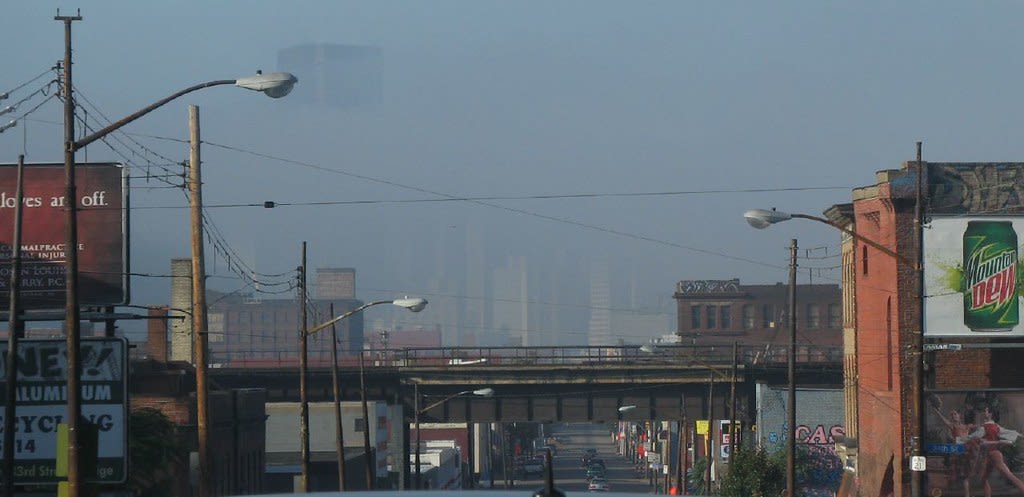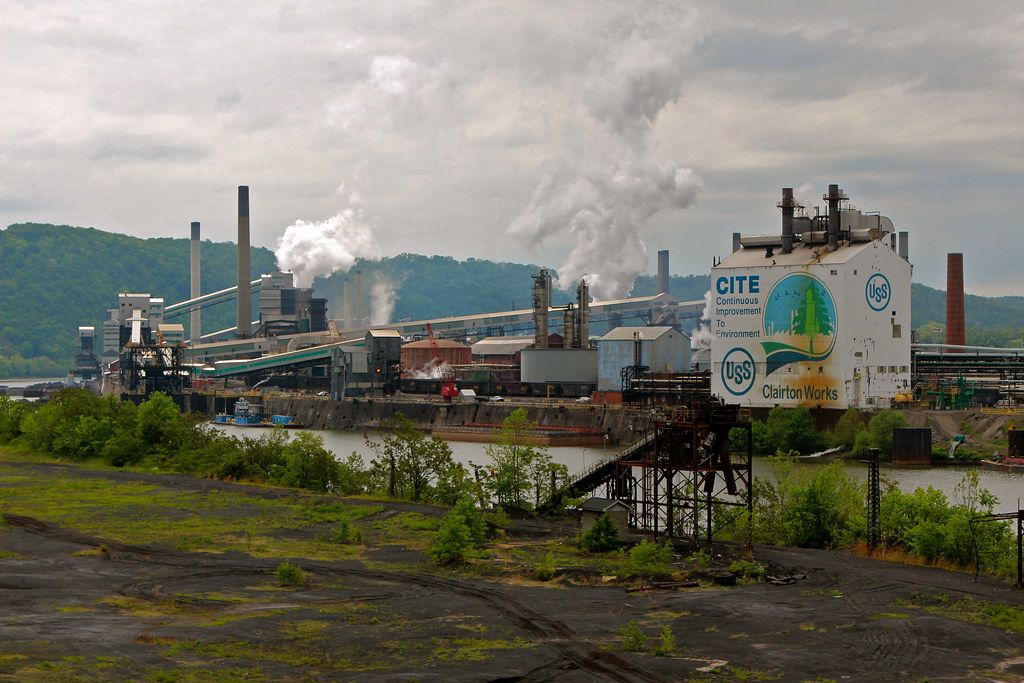Hell With the Lid Taken Off
Poor air quality in Allegheny County makes life unlivable for its poor and minority communities, but what can be done?

Allegheny County has come a long way since the days when smoke and smog from steel mills blanketed the city and resembled "hell with the lid taken off." [1]
[1] Source: University of Pittsburgh Library
Despite these improvements, air quality in Allegheny County remains above the limit for air pollution particles deemed acceptable by the EPA [2]
[2] Source: EPA
Image Source: TeachEngineering

Much of today's air pollution is concentrated in the Mon Valley region of Allegheny County
In 2005, two communities (Clairton and Glassport) had the nation's 3rd and 4th highest rates of cancer risk from air pollutants. [3], [4]
On at least 9 days this year, the Liberty-Clairton area ranked among the top 10 places for worst air quality nationwide. [5]
Geographic location of particulate matter concentrations above the accepted limit in Allegheny County
[3] Source: NEXTPittsburgh
[4] Source: Clean Air Council
[5] Source: NEXTPittsburgh
Dataset: WPRDC
Image Source: Wikimedia Commons

The Mon Valley also experiences high levels of poverty in addition to these air pollution levels
Allegheny County contains environmental justice communities, which are defined as “any census tract where 20 percent or more individuals live at or below the federal poverty line, and/or 30 percent or more of the population identifies as a non-white minority, based on data from the U.S. Census Bureau and the federal guidelines for poverty.” [6]
A 2020 study from the University of Pittsburgh found that environmental justice tracts were 20 times more common in high pollution areas, of which the Mon Valley is included. [7]
[6] Source: DEP
[7] Source: Environmental Health Journal
Dataset: WPRDC
The same University of Pittsburgh study documented disparities in pollution-related heart disease deaths in environmental justice areas, including the Mon Valley, compared to Allegheny County as a whole. [8]
40% of heart disease deaths linked to pollutants occur in environmental justice areas even though these areas contain only 27% of Allegheny County's total population
[8] Source: Environmental Health Journal
Why is air quality in the Mon Valley so bad?
10 industrial polluters are responsible for 83% of industrial air pollution reported for the Greater Pittsburgh area. [9]
4 of the top 10 industrial polluters in Allegheny County are located in the Mon Valley
The proximity of Mon Valley communities to these heavy polluters means that toxic chemicals disproportionately impact the short-term and long-term health of Mon Valley residents.
Clairton Coke Works, the third-most-toxic air polluter in Allegheny County, is located in the Mon Valley.
These residents are regularly exposed to chemicals that:
- Cause cancer
- Harm development
- Damage the cardiovascular system, the nervous system, the respiratory system, and the reproductive system [10]
[9] Source: PennEnvironment
[10] Source: Toxic Ten
Image Source: Wikimedia Commons

Why hasn't air pollution in the Mon Valley improved along with the rest of Allegheny County?
The Allegheny County Health Department (ACHD) is tasked with protecting residents from industrial polluters. However, ACHD has reached settlements with facilities that repeatedly violate clean air laws and hampered its own ability to implement future regulations on polluters. [11]
In 2020, ACHD released proposed updates to the regulations that govern Clairton Coke Works. The new regulations would reaffirm existing pollution limits and revise inspection procedures. However, they also contain loopholes that would allow the oldest, most polluting parts of the facility to continue releasing chemicals at much higher rates than the rest of the plant. [12]
[11, 12] Source: Toxic Ten
Image Source: EarthJustice

What Can You Do?
Get involved with a local advocacy organization committed to reducing air pollution levels for the Mon Valley and other areas.
Attend an Allegheny County Board of Health Public Meeting and request action.
Monitor and report air quality for your area.
Image Source: Chatham University

